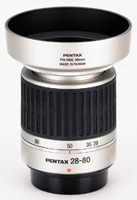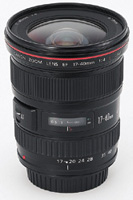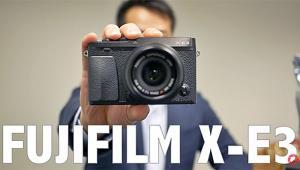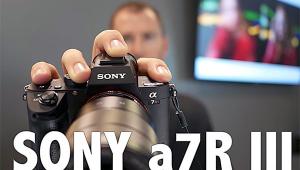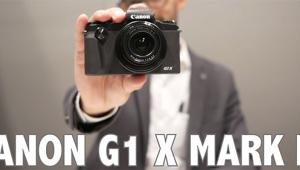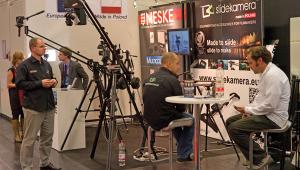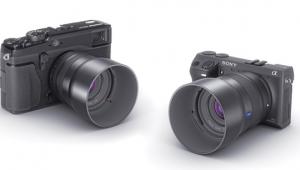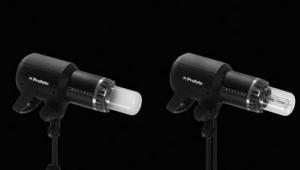New Lenses For 35mm And Digital SLR Cameras
Super Teles And A Host Of Wide Zooms For Todays And Tomorrows Digital SLRs
As several manufacturers are releasing new SLR cameras--both 35mm and digital--we're also seeing far more new lenses than we did in the past few months. The new lenses range from very affordable zooms to ultra wides and others with new high-tech features. Nikon and Olympus have announced a new series of lenses exclusively for use with their digital SLR cameras, a trend that is likely to continue. For the next three to five years sensors smaller than full frame 35mm size will probably remain standard in consumer digital cameras. That's because of the excessively high cost of large, full frame sensors, and because of the trend toward smaller and smaller SLR cameras and lenses. No matter what type of camera you own, or plan to buy, some of the following lenses will probably be of interest to you. Long Telephoto Lenses |
|
Few manufacturers are still
making manual focus lenses, but a couple of companies are still doing
so to satisfy owners of older cameras. Phoenix is one of these and their
latest product is a 100-300mm f/5.6-6.7 model, with close focusing to
4.9 ft, producing maximum magnification of 0.25x. This is a compact and
moderately lightweight zoom lens (5.3x2.5"; 52mm filter size; 17.6
oz) with a single zoom/focus ring. It is available in the following manual
focus mounts: K, Nikon AIS, Canon FD, Minolta, Olympus, and Yashica/Contax.
(Street Price: $150.) |
|
Mid Range Telephoto
Lenses |
|
Since a 28mm focal length does
not offer a very wide angle of view, especially on most digital SLR cameras,
Sigma now makes a new 24-135mm f/2.8-4.5 EX Aspherical IF zoom. Although
moderately priced (under $400), this zoom includes a low dispersion glass
element plus two aspherical elements to correct optical aberrations. Thanks
to internal focusing, the front element does not rotate, so the effect
of a polarizer will not change when focusing. This lightweight (20.6 oz)
zoom lens is available in AF mounts for Sigma, Canon, Nikon (D), Minolta
(D), and Pentax cameras. |
|
Advertised as "the world's lightest" zoom of its type, the new AF Nikkor 28-200mm f/3.5-5.6G IF-ED lens is also surprisingly compact (2.7x2.8"; 62mm filter size; 12.7 oz). As a bonus, this model focuses closer than its competitors: to a mere 1.3 ft at the 200mm end. As a multi-purpose zoom, it includes the most popular focal lengths for people pictures and travel photography, so it will often preclude the need to carry other lenses. Thanks to its two ED glass and three aspherical lens elements, plus internal focusing, this model should provide great image quality and fast/smooth autofocus. The AF Zoom Nikkor 28-200mm f/3.5-5.6G IF-ED is compatible with the same cameras as the 24-120mm model and also incorporates a round diaphragm. (Price not yet set.) Ultra-Wide Angle Lenses
|
|
While the Nikkor AF-S DX 12-24mm
f/4G IF-ED zoom is not designated as a pro lens, it includes many advanced
features. Two ED glass elements promise great color, sharpness, and contrast
while three aspherical elements minimize distortion and optical aberrations
such as coma. The ultrasonic Silent Wave motor and internal focusing provide
smooth, quiet ultra-fast AF operation, while the M/A mode enables instant
manual override of autofocus at any time. A round diaphragm renders out
of focus highlights as circular even at f/8 for more natural effects,
while the 11.8" minimum focus distance is certainly impressive for
a lens of this type. (Street Price: $999.) |
|
First shown on the new *ist D camera, the Pentax FA J Zoom 18-35mm f/4-5.6 AL zoom will be an ideal companion for that digital SLR body, offering focal lengths equivalent to 28-54mm in the 35mm format. Naturally, this short zoom will also be a great choice for those who want an ultra-wide lens for a conventional Pentax SLR camera, whether autofocus or manual focus. At our press time, the specifications and price were not yet available for this aspherical lens, but you should find full information on the Pentax web site by the time you read this issue. |
|
New From Tamron |
|
New Olympus Lens System
|
- Log in or register to post comments



